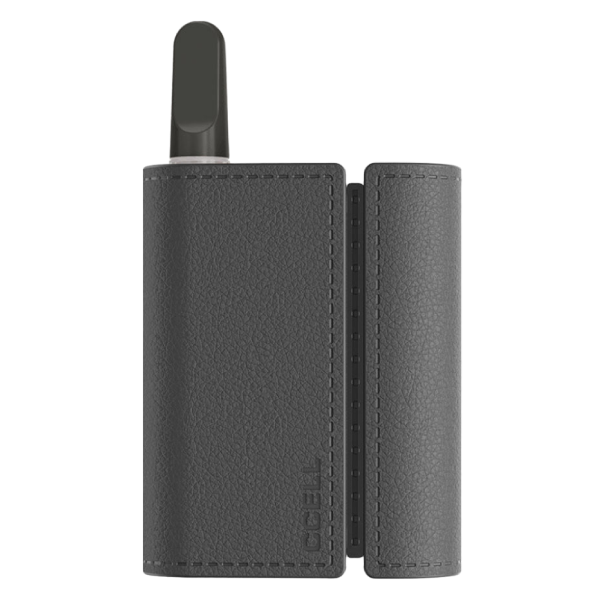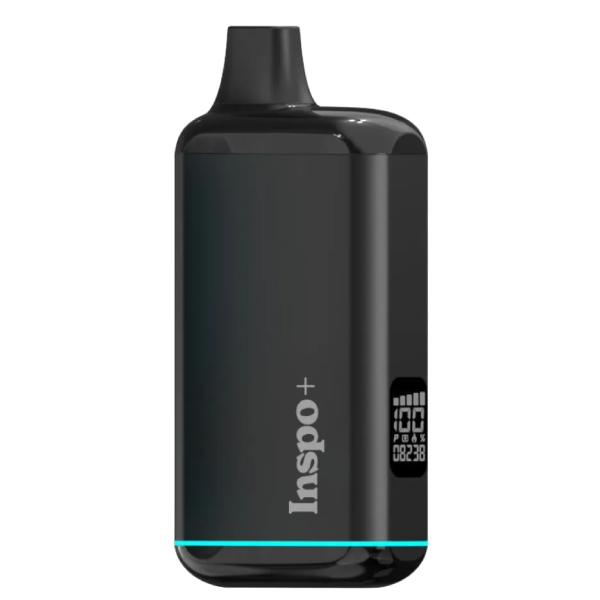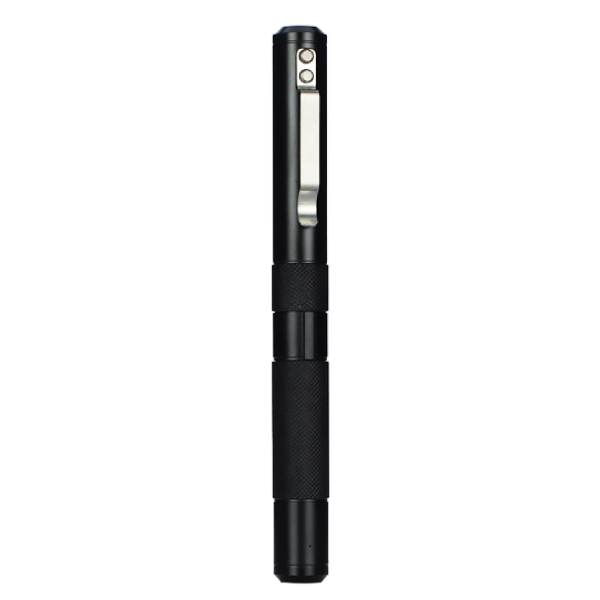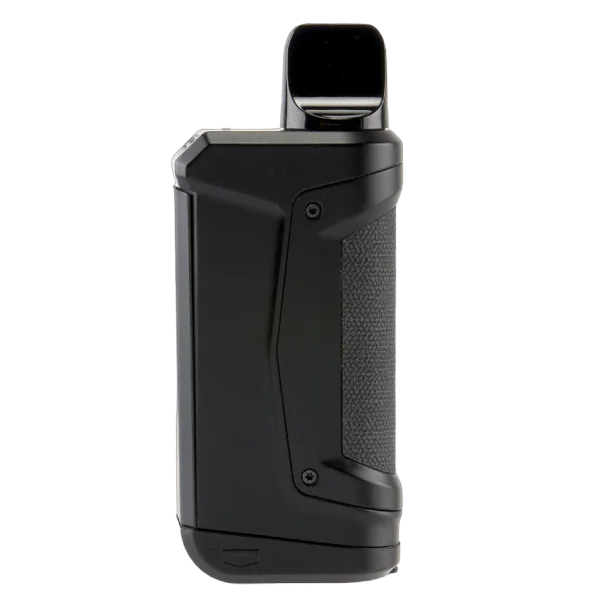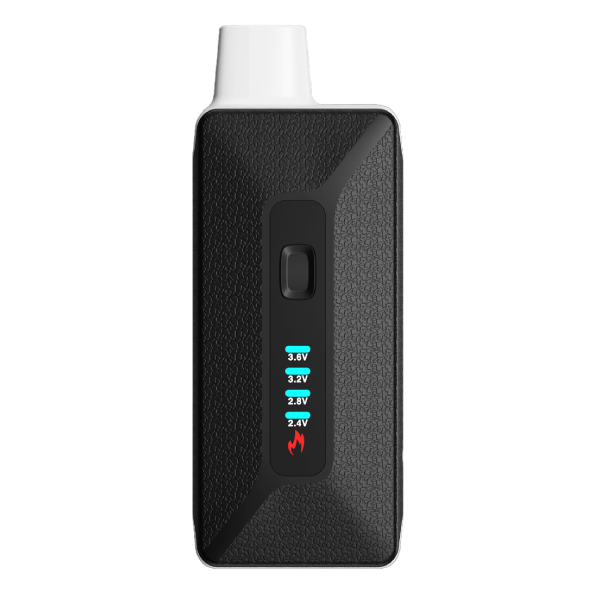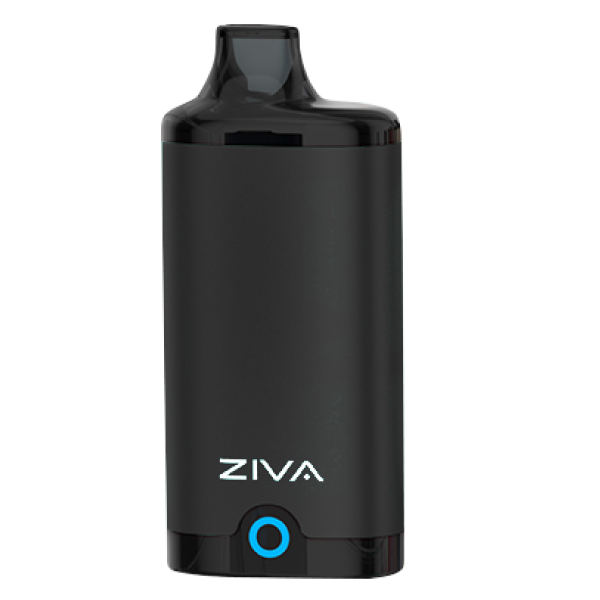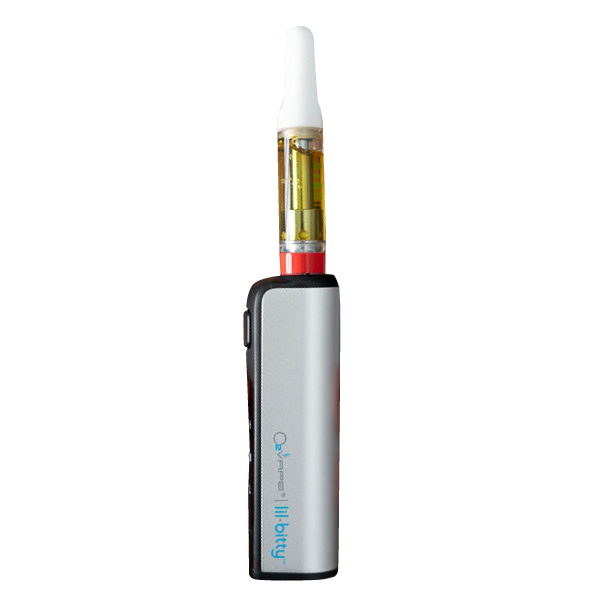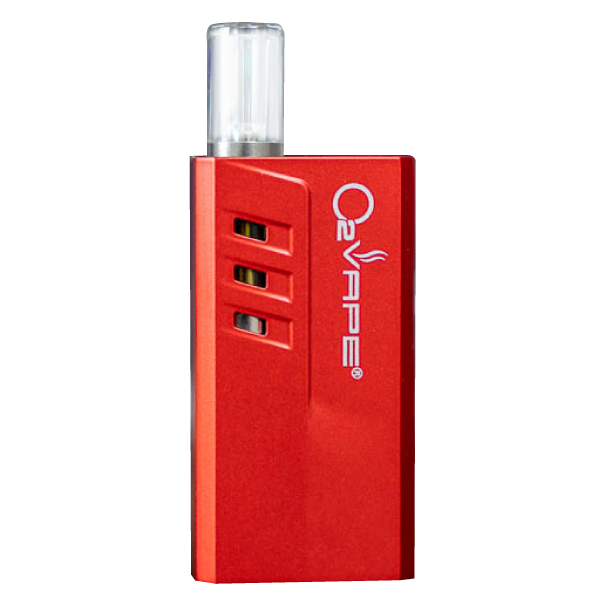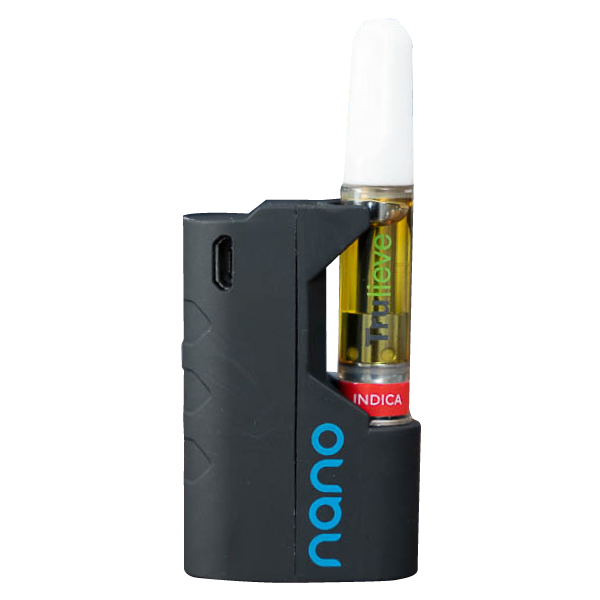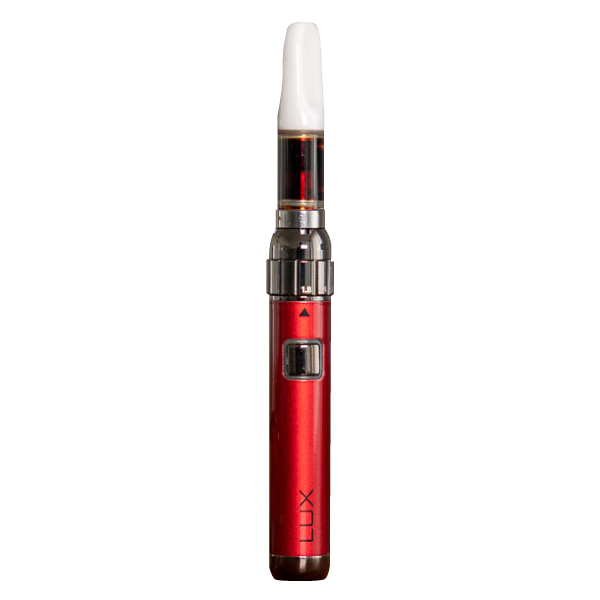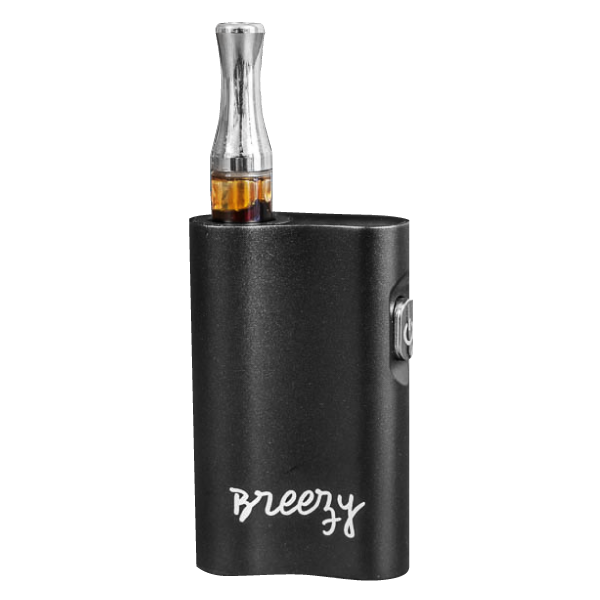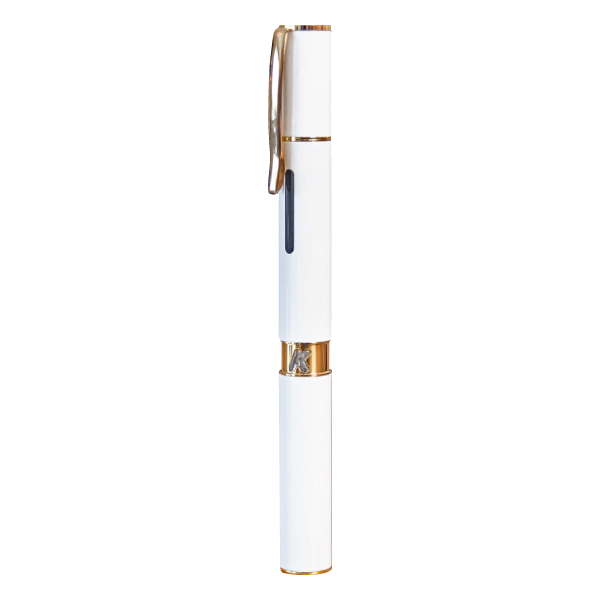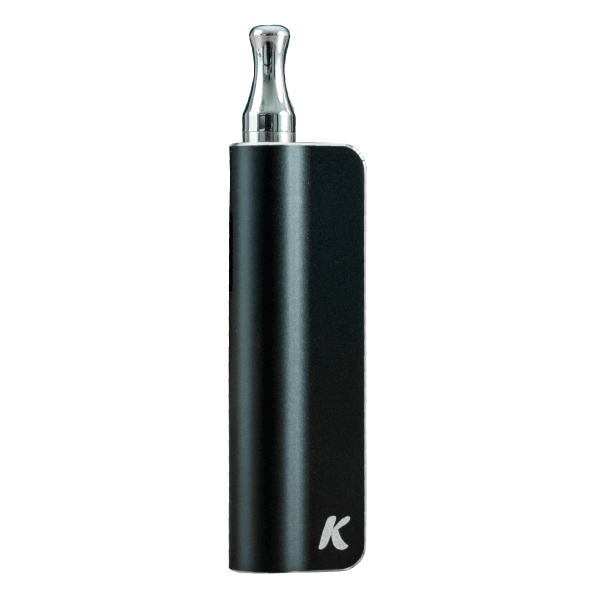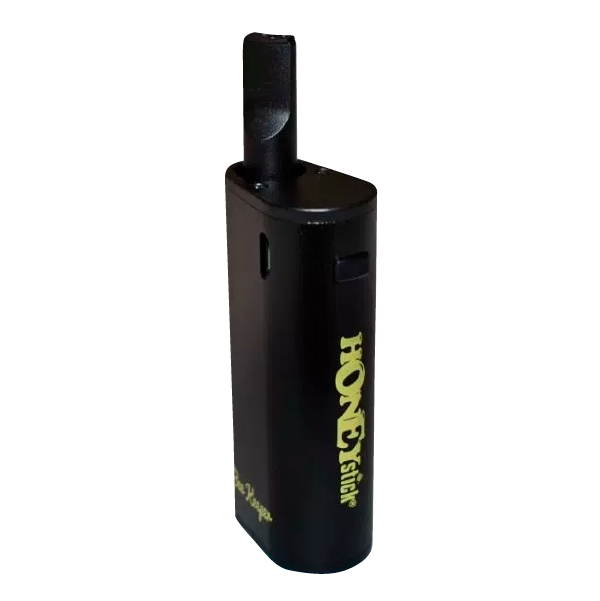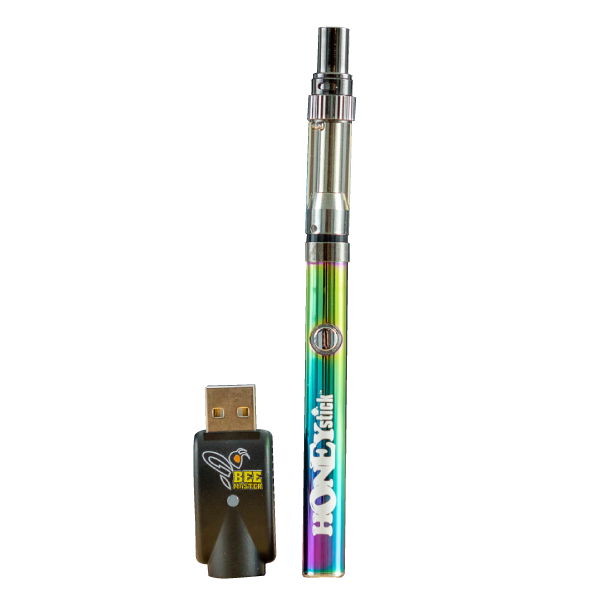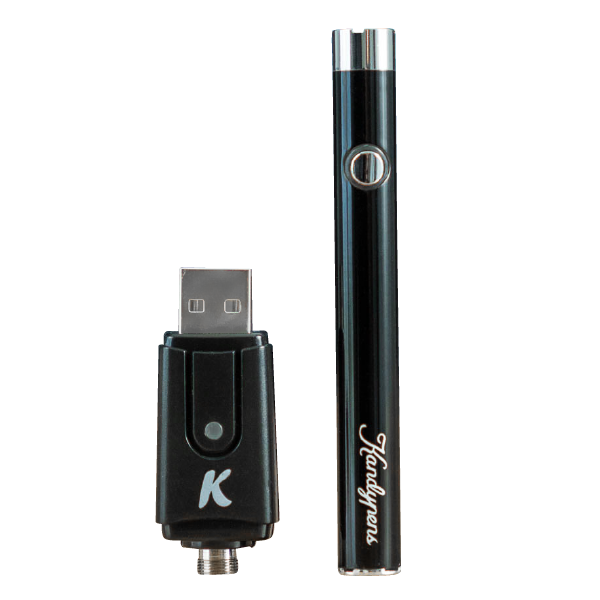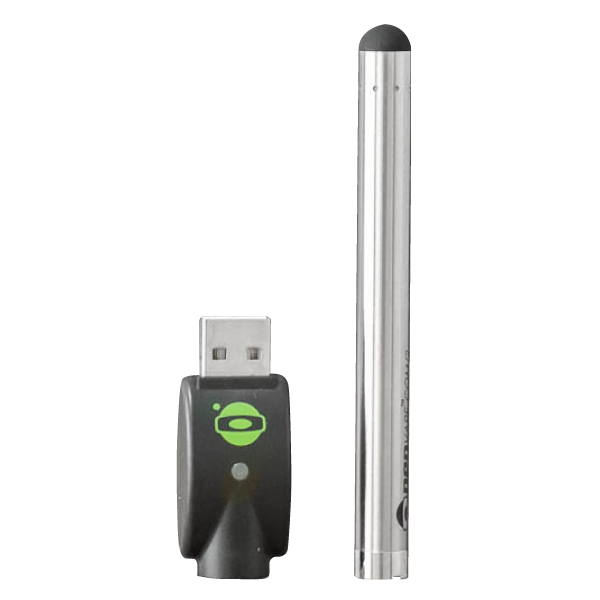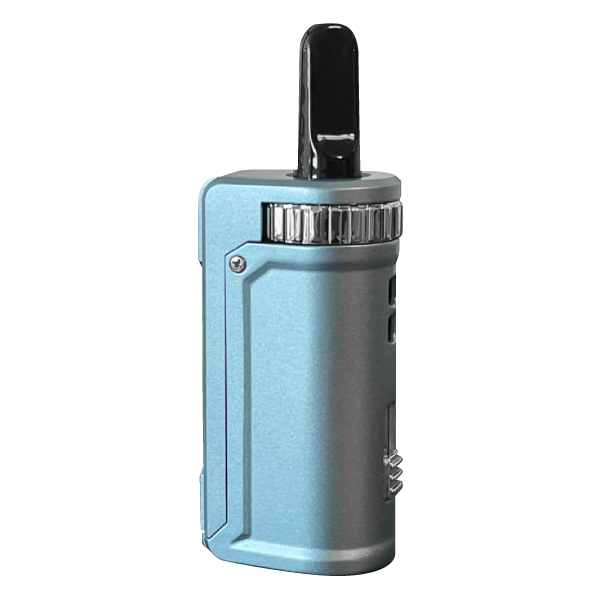What are 510 batteries?
510 thread batteries are the standard type of battery used with oil carts like distillate, resin, or rosin. Vape Carts only contain the oil and the heating coil but don’t have a built-in power source. The power source is connected externally via a 510 thread that is supported by both the cart and the battery.
“510” refers to the thread specs- 10 threads spaced 0.5mm apart. This universal connection makes batteries and carts compatible even if they are made by different manufacturers.
Related: Best 510 batteries of 2024
Pen Style vs. Concealed batteries
Pen-style 510 batteries are slim and elongated, resembling a traditional pen. The cart screws on top with the 510 thread and is fully visible. Vape Pens are portable and discreet, easily slipping into a pocket or purse. They typically feature a straightforward design with a single button.
Conceal-style 510 batteries, on the other hand, are designed with a focus on stealth and discretion. They typically feature a compartment or a slot where the cartridge is inserted, partially or fully concealing it. These vapes can easily pass as eCigs or “elf bars” and fly under the radar in certain situations. Plus, the cart is protected from accidental drops or impacts. Conceal-style batteries often have a slightly bulkier design than pen-style ones, but this can also mean a larger battery capacity, providing longer usage time.
Voltage & Power
Most 510 batteries feature variable voltage, typically around 2.5 to 4.8 volts. Voltage can be considered as the “intensity controller,” and it dictates the temperature at which your cart heats the material. It’s like the dial on your stove – higher voltage, higher heat.
Higher voltage can mean thicker vapor, but it can also lead to a harsher taste and quicker degradation of the oil. Lower voltage, conversely, offers a smoother and more flavorful hit but with less vapor production.
Pro tip: find the perfect temp
The best voltage to use depends on your cart and material, but here are my general recommendations:
- Live rosin, solventless extracts, and live resin oil are delicate and will taste better at lower temps. The recommended voltage is around 1.8v to 2.6v.
- Distillate & CO2 carts are more refined and should be used at medium temps, around 2.6v up to 3.5v.
It’s best to start low and increase until you find a perfect balance between flavor, vapor production, and throat hit. If you notice any burnt or harsh taste, the temp is too high.
What is mAh? The capacity, measured in milliamp hours (mAh), determines how long the battery can last before recharging. Vape batteries typically start around 350mAh and go up to around 800mAh.
Button vs. Draw Activation
Using a button to activate the heating element gives you full control over the duration and intensity of the draw, allowing for a more fine-tuned experience. Plus, manual button operation is a simple, mostly fail-proof design with very little that can go wrong.
Draw-activated batteries are activated by inhalation, eliminating the need to click a button. This feature makes them incredibly user-friendly and easy to use. But, they can sometimes be more/less sensitive depending on the user and the drawing style.
How to use a 510 battery
While different batteries have different usage instructions, they are all typically pretty straightforward to use. To use most batteries-
- Click the power button five times to unlock/lock.
- Click three times to cycle through the voltage settings.
- Click two times to start “sesh mode”- heat will stay active for 10 seconds without the need to hold the button.
- Or click and hold for manual heat.
USB-C vs traditional 510 chargers
The charging method is often overlooked but can make or break your experience with a specific device. Vape batteries usually come with one of two charging setups-
510 Charger– this charger connects to the battery with the same thread that connects the battery to the cart. This means that you’d have to disconnect the cart before each charge, which is a pain. Plus, if you lose the charger, you’d have to buy another one, leaving you with no way to charge. I recommend avoiding batteries with this type of charger.
USB-C charger– is a lot more flexible, as you probably have a few lying around at all times, and they are a lot more available. They are also superior in charging speed and a lot more convenient as you don’t need to unscrew the cart.
Guidelines for safe usage and storage
- Keep in a Cool, Dry Place: Store batteries at room temperature in a dry environment. Extreme temperatures, both hot and cold, can significantly reduce battery performance and lifespan.
- Avoid Metal Contact: Ensure that the battery terminals do not come into contact with metal objects like coins, keys, or other batteries.
- Use Proper Containers: Store batteries in non-conductive containers, such as plastic battery storage cases.
- Keep Away from Flammable Materials: Batteries, especially lithium-ion, should be stored away from flammable materials to reduce fire risk in case of a battery defect or damage.
- Inspect Regularly for Damage: Regularly check batteries for signs of damage, such as corrosion, swelling, or leakage. If a battery is damaged, it should be properly disposed of, as it can be a safety hazard.
Source: EPA household batteries guidelines
Conclusion
510 Vape batteries are considered by many to be the easiest way to consume vaporizer oils and extracts. They work on low voltage, allowing them to be slim and light.
Unlike dab pens, they don’t need constant reloading, and unline dry herb vapes don’t require a high power output.
They are simple point-and-shoot devices that heat up immediately and offer unmatched convenience.
There are a few different types of batteries, but they are all straightforward to use. Hopefully, this article helped you better understand the considerations when buying a 510 battery for carts.
FAQs
Do all carts use 510 thread?
No, but the vast majority are. There are other types, like pod systems or proprietary threads, that specific brands use.
How do I know if my cart is 510 thread?
If you’re holding a cart that has a small threat at the bottom, it is 99% 510 thread. The only way to tell for certain is to screw it into a battery.
Are 510 batteries legal?
The legality of 510 batteries themselves is generally not an issue, as they are simply power sources.
Can I fly with a 510 battery?
Yes, as per the TSA official website, you can typically fly with a 510 battery, but it must be carried in your carry-on luggage. Most airlines prohibit vaping devices in checked baggage due to fire risk.
Are vaping carts healthier than smoking?
Vaping is often considered a less harmful alternative to smoking, as it doesn’t involve combustion, which releases many harmful chemicals. However, “healthier” is subjective, and vaping still poses risks, especially with unregulated products. It’s important to source cartridges only from licensed suppliers and be aware of the risks and health implications associated with vaping.
What does the 510 refer to?
The term “510” refers specifically to the threading type of the battery and cartridge connection. It indicates the thread pattern used for the screw-on connection between the battery and the cartridge. The number ‘510’ doesn’t relate to voltage, brand, type of device, or cartridge content. It’s purely a specification for the physical connection- 10 threads, 0.5mm apart.
